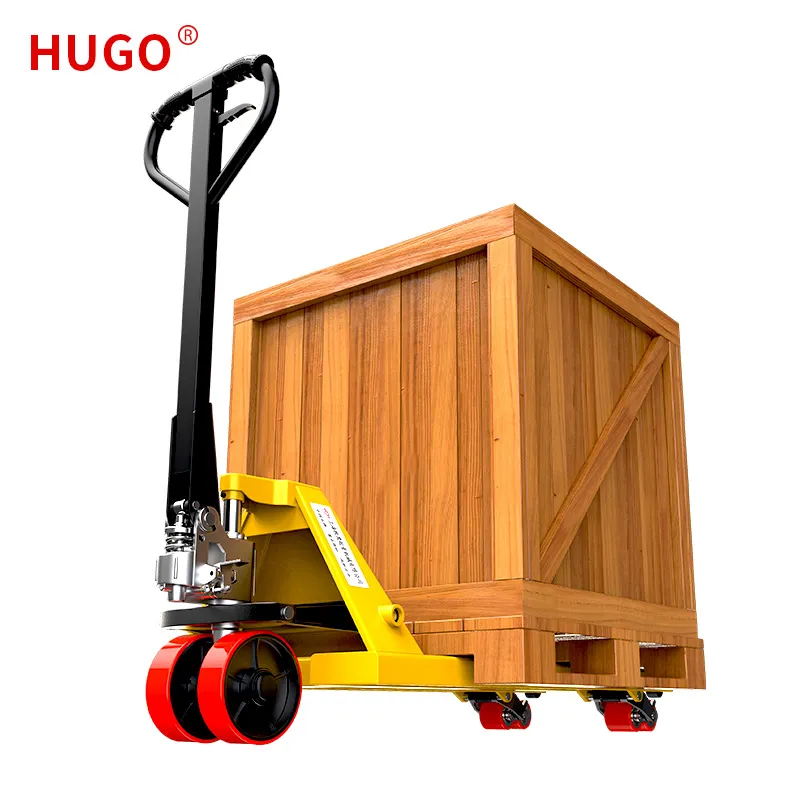
- English
- Español
- Português
- русский
- Français
- 日本語
- Deutsch
- tiếng Việt
- Italiano
- Nederlands
- ภาษาไทย
- Polski
- 한국어
- Svenska
- magyar
- Malay
- বাংলা ভাষার
- Dansk
- Suomi
- हिन्दी
- Pilipino
- Türkçe
- Gaeilge
- العربية
- Indonesia
- Norsk
- تمل
- český
- ελληνικά
- український
- Javanese
- فارسی
- தமிழ்
- తెలుగు
- नेपाली
- Burmese
- български
- ລາວ
- Latine
- Қазақша
- Euskal
- Azərbaycan
- Slovenský jazyk
- Македонски
- Lietuvos
- Eesti Keel
- Română
- Slovenski
- मराठी
- Srpski језик
What are the requirements for a manual pallet jack inspection?
2024-09-24
A manual pallet jack inspection is essential for ensuring its safe operation and prolonging its lifespan. Regular inspections help identify potential issues before they lead to accidents or equipment failure. The requirements for a manual pallet jack inspection typically involve checking both operational functionality and structural integrity. Here's a breakdown of the key requirements:
1. Visual Inspection
- Wheels and Casters: Check for wear, cracks, or damage to both the load wheels and the steering wheels. Ensure they rotate smoothly and aren’t obstructed by debris.
- Forks: Inspect the forks for any signs of bending, cracks, or deformities. Make sure there’s no excessive wear on the tips of the forks.
- Handle: Ensure the handle is securely attached and moves freely. Look for any visible damage or signs of weakness, such as cracks or bends.
- Hydraulic System: Examine the hydraulic pump for leaks, signs of corrosion, or damage to the seals. Any signs of fluid leaking should be addressed immediately.
- Frame: Check the overall structure of the frame for damage, rust, or cracks, especially in the joints where the forks connect to the frame.

2. Functional Checks
- Fork Movement: Test the raising and lowering function by pumping the handle. The forks should move up and down smoothly without resistance or jerky movements. Ensure the pallet jack can maintain its lifted position without slowly lowering.
- Steering: Move the pallet jack back and forth to ensure smooth steering. Check if the handle turns easily in both directions without obstruction.
- Brake Functionality (if equipped): Test the braking system to ensure it works properly when engaged. Some manual pallet jacks have foot brakes, which should be checked for proper engagement and release.
- Load Test: If possible, conduct a load test to verify that the pallet jack can lift and transport the specified load capacity without any mechanical issues.
3. Hydraulic Fluid Levels
- Check Hydraulic Fluid: Some manual pallet jacks allow for inspection of the hydraulic fluid level. If applicable, ensure the fluid level is adequate and top up if needed using the correct type of fluid specified by the manufacturer.
4. Safety Labels and Markings
- Capacity Labels: Confirm that the pallet jack's capacity label is legible and accurate. This label typically indicates the maximum load the pallet jack can safely lift.
- Safety Stickers: Ensure any safety warnings and operational stickers are intact and visible to operators.
5. Operational Smoothness
- Lifting Mechanism: Test the pump action to ensure the jack raises smoothly with no excessive effort. If the jack doesn't rise or requires significant force to lift, the hydraulic system may need maintenance.
- Lowering Mechanism: Check that the lowering lever or release trigger operates smoothly and that the forks lower at a controlled rate.
6. Additional Considerations
- Alignment: Check that the forks are parallel and aligned properly. Misalignment can lead to difficulty moving the load and increase wear on the jack.
- Loose Parts: Inspect for any loose nuts, bolts, or other parts that could affect the structural integrity or operation of the pallet jack.
7. Documentation
- Inspection Logs: Maintain a record of all inspections, noting any repairs or adjustments made. Regular documentation ensures that issues are tracked and addressed promptly.
- Manufacturer’s Guidelines: Follow the inspection schedule and maintenance recommendations provided by the manufacturer to ensure compliance with industry standards.
8. Frequency of Inspections
- Daily Pre-Use Check: Operators should perform a quick check of the major components (forks, wheels, hydraulic pump, and handle) before using the pallet jack at the beginning of each shift.
- Comprehensive Inspection: A more thorough inspection should be conducted periodically, depending on usage, typically once a week or monthly for high-use environments.
Regular and thorough inspections of a manual pallet jack are critical to maintaining safety standards and preventing operational breakdowns. Identifying and addressing issues early can prevent accidents, increase efficiency, and ensure the longevity of the pallet jack.
As a professional China Pallet Jack manufacturers and suppliers, we provide customers with comprehensive project management services. For inquiries, you can reach us at SALES3@YIYINGGROUP.COM.


